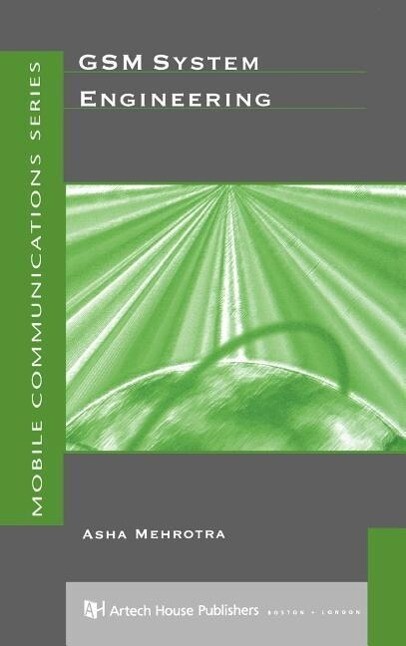Here is a comprehensive look at the global system for mobile communications from an engineer's viewpoint. It cover the architecture, protocols, and time and frequency domain representation, as well as the important issues of network maintenance and management of mobility, subscribers and security.
Inhaltsverzeichnis
Introduction to GSM: Brief History of Cellular Radio in Europe: Why GSM? GSM Background. GSM Requirements. Types of Services. Future Developments. Book Outline. GSM Architecture: Base Station Subsystem. Switching System. Telecommunication Management Network. Mobile Station and the Radio Interface. Network SS7 and X.25. Time and Frequency Axis Representation: Time and Frequency Representation. Physical Channels. Logical Channels. Control Channels. Mobile Modes of Operation. Structure of a TDMA slot within a frame. Mobility Management: Active and Inactive Mobile. Initial Channel Acquisition and Network Registration. Location Updating. Paging Procedure. Off Air Call Setup. Call on Hold and Automatic answer. Supplementary Services. Security Management: Authentication. Encryption. Subscriber Identity Module and its Implementation. Technical Details of GSM: System Level Technical Requirements. Modulation. Coding. Burst Transmission. Delay Requirement. Discontinuous Transmission and its Impact on System Performance and Planning. Spectral Efficiency. Mobile Assisted Digital Handover (MADHO). Timing Advance Mechanism. Frequency Hopping and its Impact on System Performance and Planning. Mobile Power Control. Subscriber Management and Network Maintenance: Subscriber Management. Network Maintenance. Protocol Layering Architecture: Segmentation and Re-assembly of Messages. Radio Interface between MS and BSS. Interface between BSS and MSC. MSC, BSS and OCC: MSC Sub-system. Base Station Sub-system. Operations and Maintenance Center Sub-system. Mobile Station Sub-system. Future of GSM System: Application around 1800 Mhz PCS service.
